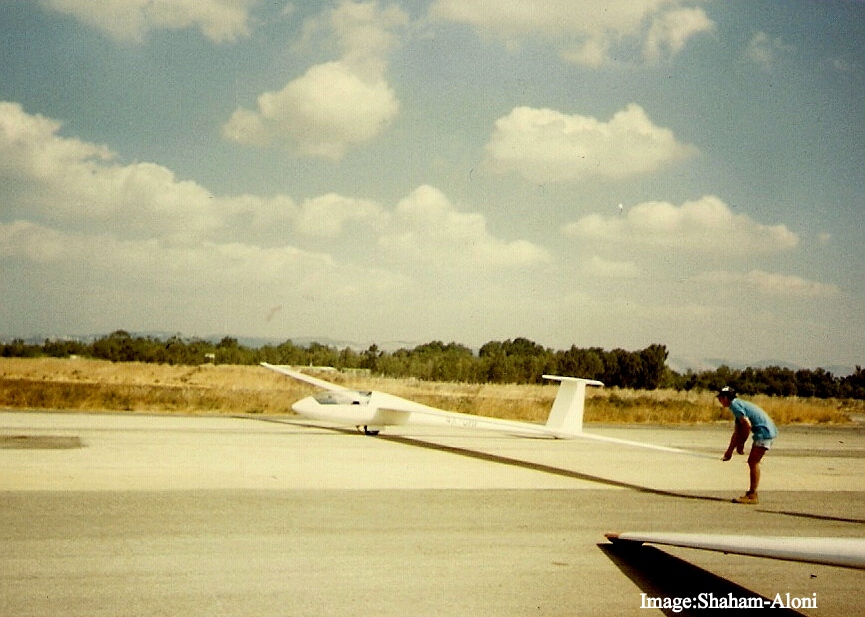I have been asked by representatives of many soaring clubs if the GlaStar could be a good towplane for gliders. After examining the towplane’s job and the GlaStar’s capabilities, I believe the answer is yes!!
The Towplane Mission
The job requirements of a good towplane include excellent takeoff performance from short grass strips, the capability to climb rapidly to release altitude (usually 3,000 feet AGL), and the ability to descend quickly to the airfield for rapid turnarounds without shock-cooling the engine.
There are hundreds of sailplane types flying throughout the world, but the envelope of requirements is established by the Schweizer 2-22 trainer and the Shempp-Hirth Nimbus 3. The 2-22 is among the lightest gliders at 900 lb gross, but its trainer-class performance is revealed in a low lift-to-drag ratio (L/D) of 17, which produces an in-flight towline load of 55-60 lb. At the other end of the spectrum is the grand Shempp-Hirth Nimbus 3, with a gross weight of 1,654 lb and an L/D of 55. The Nimbus 3 creates the maximum inertia during takeoff acceleration but once airborne produces a towline load of only 30-35 lb.

GlaStar Suitability
There are five major reasons why I think the GlaStar (equipped with a 160-hp Lycoming O-320 engine) can add this utility job to its growing list of capabilities.
No rules against it! There is no FAR that prohibits towing with an airplane in the Experimental Category, as long as it’s not done for hire and the pilot is trained and endorsed for towing operations. Thus, soaring club operators can benefit from this premium, durable kit-built airplane.
FAR 91.309 spells out pilot and aircraft requirements for towing operations. The pilot must be qualified under FAR 61.69 for towing. The airplane must be equipped with an approved tow hitch. Towline breaking strength must be at least 80% of the maximum gross weight of any glider to be towed. Many operators employ weak links at the glider and towplane ends to protect the sailplane and towplane from shock loads following a slackening of the towline.
Advisory Circular 43.13 expands on FAR 91.309 to add safety factors and a towline envelope around the hitch. This conical envelope allows a 20° half-angle cone of displacement on the towline.
Excellent low-speed handling! Sailplanes like to fly near their optimum L/D speed, which is typically in the 41-59 knot range. For the safety of the tow pilot, however, tow speeds should be at least 1.2 Vs, which is 51 knots for the GlaStar—right in the middle of the ideal range. The GlaStar’s exceptional handling and controllability at these speeds have been thoroughly demonstrated. The strong Frise ailerons can pick up a wing at speeds below Vs, and the GlaStar’s rudder can handle the large yawing moments that can be produced when the glider wanders beyond “the box.”
160 hp performance! While towing the 1,654 Ib. Nimbus 3, I calculate that the GlaStar could accelerate to a takeoff speed of 51 knots in little more than 200 feet of ground roll. Following this, I estimate a climb rate exceeding 700 f.p.m. under standard conditions at sea level. Climb on tow should exceed 450 fpm up to a density altitude of 6,500 feet. With the lighter Schweizer 2-22 in tow, initial rate of climb should be greater than 850 fpm, and sustained climb rates of greater than 450 fpm should be possible up to 8,000 feet density altitude.
These performance figures are estimated based on the demonstrated performance of the 160 hp prototype GlaStar. The 180 hp installation should, of course, provide even more performance.
Inherent structural strength! The basic GlaStar structure is more than adequate to accept the modifications required by FAA Advisory Circular 43.13-2A. The static load testing that was conducted on the GlaStar used the forces and mass of the 180 hp Lycoming O-360, and the specific tests that simulated maneuver and gust loads produced more fuselage bending than could be produced by the heavy Nimbus 3 in flight.
Ease of modification! Installation of a certificated tow hook assembly, release wire and guides, cockpit control lever and so on would be relatively simple. Schweizer and Tost are two brands of commercially available tow hitch that could easily be adapted to the GlaStar for installation between the tail wheel springs and the fuselage.
The conclusions of this article are Bud’s alone and have not been reviewed or endorsed by Stoddard-Hamilton.



